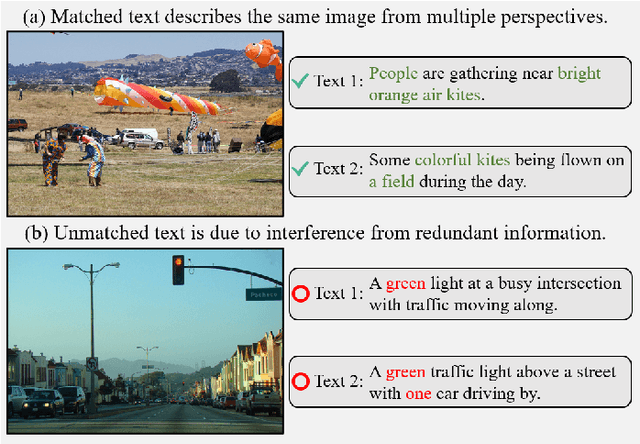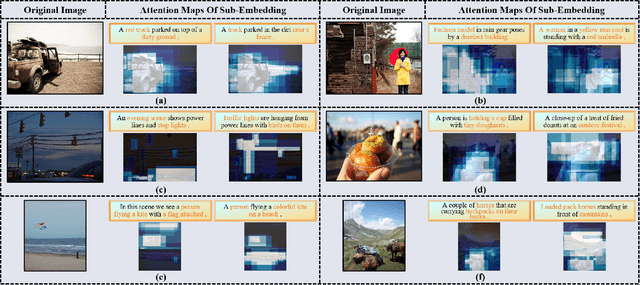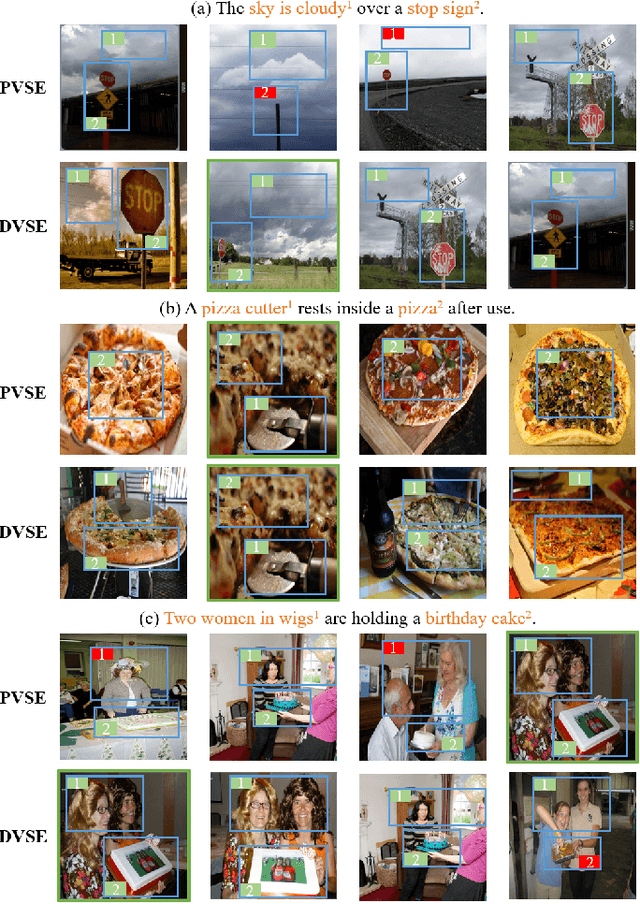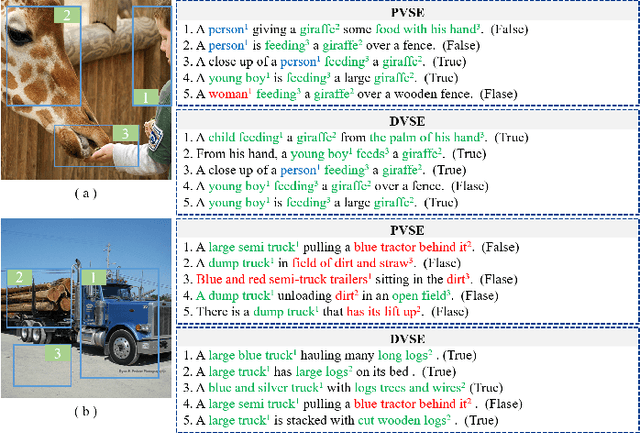Changguang Wu
Uncertainty-Aware Multi-View Visual Semantic Embedding
Sep 15, 2023



Abstract:The key challenge in image-text retrieval is effectively leveraging semantic information to measure the similarity between vision and language data. However, using instance-level binary labels, where each image is paired with a single text, fails to capture multiple correspondences between different semantic units, leading to uncertainty in multi-modal semantic understanding. Although recent research has captured fine-grained information through more complex model structures or pre-training techniques, few studies have directly modeled uncertainty of correspondence to fully exploit binary labels. To address this issue, we propose an Uncertainty-Aware Multi-View Visual Semantic Embedding (UAMVSE)} framework that decomposes the overall image-text matching into multiple view-text matchings. Our framework introduce an uncertainty-aware loss function (UALoss) to compute the weighting of each view-text loss by adaptively modeling the uncertainty in each view-text correspondence. Different weightings guide the model to focus on different semantic information, enhancing the model's ability to comprehend the correspondence of images and texts. We also design an optimized image-text matching strategy by normalizing the similarity matrix to improve model performance. Experimental results on the Flicker30k and MS-COCO datasets demonstrate that UAMVSE outperforms state-of-the-art models.
LUT-GCE: Lookup Table Global Curve Estimation for Fast Low-light Image Enhancement
Jun 30, 2023



Abstract:We present an effective and efficient approach for low-light image enhancement, named Lookup Table Global Curve Estimation (LUT-GCE). In contrast to existing curve-based methods with pixel-wise adjustment, we propose to estimate a global curve for the entire image that allows corrections for both under- and over-exposure. Specifically, we develop a novel cubic curve formulation for light enhancement, which enables an image-adaptive and pixel-independent curve for the range adjustment of an image. We then propose a global curve estimation network (GCENet), a very light network with only 25.4k parameters. To further speed up the inference speed, a lookup table method is employed for fast retrieval. In addition, a novel histogram smoothness loss is designed to enable zero-shot learning, which is able to improve the contrast of the image and recover clearer details. Quantitative and qualitative results demonstrate the effectiveness of the proposed approach. Furthermore, our approach outperforms the state of the art in terms of inference speed, especially on high-definition images (e.g., 1080p and 4k).
 Add to Chrome
Add to Chrome Add to Firefox
Add to Firefox Add to Edge
Add to Edge